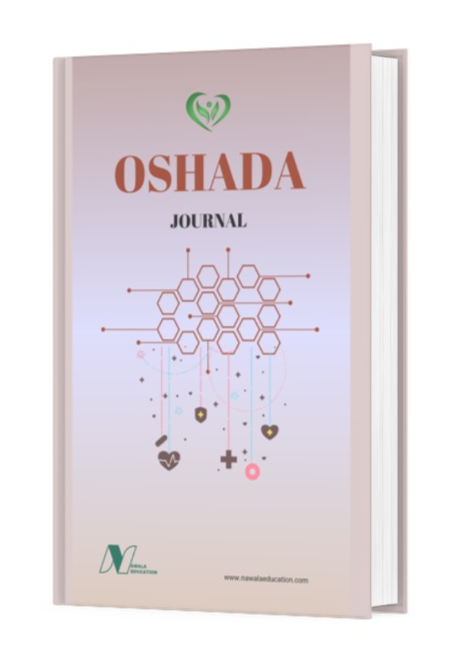Factors Associated With The Incidence Of Diarrhea In Toddlersin The Meureubo Health Center Working Area, Meureubo Sub-District, West Aceh District In 2023
DOI:
https://doi.org/10.62872/1p62hb80Keywords:
Diarrhea, Personal Hygiene, ToddlerAbstract
Diarrhea is a potential endemic disease that can result in extraordinary outbreaks (KLB) and is often associated with mortality. According to data from the Meureubo Health Center in 2022, this center recorded the highest percentage of diarrhea cases among toddlers, reaching 67%. This study aims to examine the relationship between several factors clean water sources, latrine facilities, household waste management, wastewater disposal, maternal knowledge and education, nutritional status, personal hygiene, and environmental sanitation and the incidence of diarrhea in toddlers within the Meureubo Health Center working area, Meureubo District. This quantitative research utilizes a cross-sectional design and was conducted from May 13-29, 2023. The population includes all toddlers in the Meureubo Health Center working area, with a sample size of 97. Proportional random sampling was used to select the 97 respondents. Data were analyzed using the chi-square test with Stata 15, including univariate and bivariate analyses. The univariate results show that 43.30% of toddlers experienced diarrhea, 19.58% lacked access to clean water, 5.15% had inadequate latrine facilities, 57.73% faced insufficient household waste management, and 21.65% had improper wastewater disposal systems. Additionally, 30.93% of mothers had poor knowledge, 35.05% had a primary education level, 20.62% of toddlers were malnourished, and 39.18% had poor personal hygiene and environmental sanitation. Bivariate analysis reveals significant relationships between diarrhea incidence in toddlers and clean water sources (p-value: 0.0001), latrine facilities (p-value: 0.013), household waste management (p-value: 0.0001), wastewater disposal (p-value: 0.0001), maternal knowledge (p-value: 0.0001), maternal education (p-value: 0.036), nutritional status (p-value: 0.022), and personal hygiene and environmental sanitation (p-value: 0.0001). It is recommended that health workers, particularly those in health promotion, provide counseling on personal hygiene and environmental cleanliness
Downloads
References
Adisasmito, Wiku. Risk factors for diarrhea in infants and toddlers in Indonesia: Systematic review of academic research in public health. Makara kesehatan, 2007, 11.1: 1-10.
Almatsier, Sunita. Basic principles of nutrition. Jakarta: Gramedia Pustaka Utama, 2005.
Anggita, Imas Masturoh, Nauri, Health Research Methodology, Jakarta: KEMENKES RI; 2018.
Ardhiana, Putu, et al, Research Methodology for Education, Medan: Yayasan kita menulis; 2021.
Arindari, Dewy Rury; Yulianto, Eko. The Relationship between Maternal Knowledge and Attitudes with the Incidence of Diarrhea in Toddlers in the Punti Kayu Palembang Center Working Area. Scientific Journal of Health, 2018, 7.1: 47-54.
Bangun, Henny Arwina, et al., The Relationship between Basic Sanitation and the IncidenceDiarrhea in Toddlers in Durian Village, Pantai Labu District, Deli Serdang Regency. Journal of Health Technology and Social Sciences (Tekesnos), 2020, 2.1:57-66.
Indonesian Ministry of Health. Diarrhea Bulletin. Ministry of Health of the Republic of Indonesia. 2016.
West Aceh District Health Office, Health Profile of West Aceh District, West Aceh: Health Office; 2019.
Aceh Provincial Health Office, Aceh Provincial Health Profile, Aceh: Health Office; 2020.
Fitrah, Muh, Luthfiyah, Research Methods: Qualitative Research, classroom action and case studies, Sukabumi: Jejak Publisher; 2017.
Fitriani N, Darmawan A, P, Analysis of risk factors for diarrhea in toddlers in the Pakuan Baru Health Center working area, Jambi City: Med Dedication J Pengabdi Kpd Mas FKIK UNJA; 2021;4(1):154-64.
Ganguly, Enakshi, et al., Prevalence and risk factors of diarrhea morbidity among under-five children in India: A systematic review and meta-analysis. Indian journal of child health, 2015, 2.4: 152.
Gibson. Nutritional status and its measurement. Bogor Agricultural Institute. 2005.
Hamzah, B., et al., The relationship between clean and healthy living behavior and the incidence of diarrhea in toddlers in Belawa District, Wajo Regency in 2012. Makassar: FKM UNHAS, 2012.
Hijriani H, A A, K A. Knowledge of healthy hygiene behavior (PHBS) in children with diarrhea at class B General Hospital,ubang Regency: J Heal Sains; 2020;1(5).
Downloads
Published
Issue
Section
License
Copyright (c) 2024 Muhammad Fassa, Fauzi Ali Amin, Anwar Arbi, Khairuman (Author)

This work is licensed under a Creative Commons Attribution-ShareAlike 4.0 International License.

This work is licensed under a Creative Commons Attribution-ShareAlike 4.0 International License.











